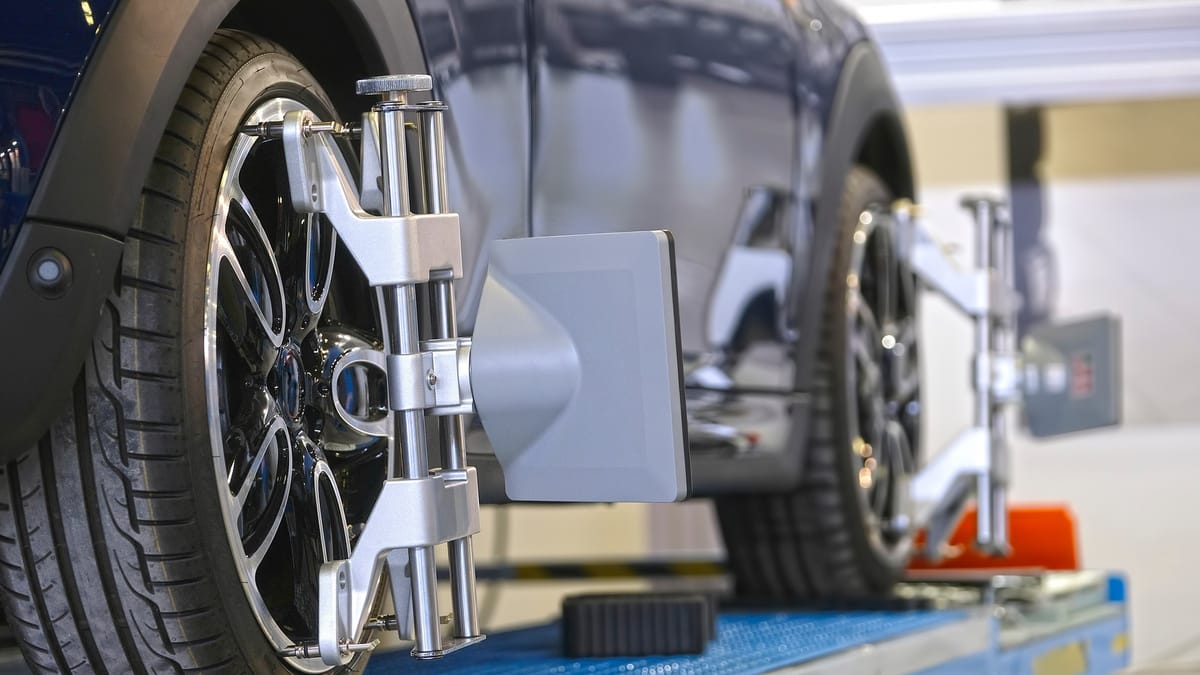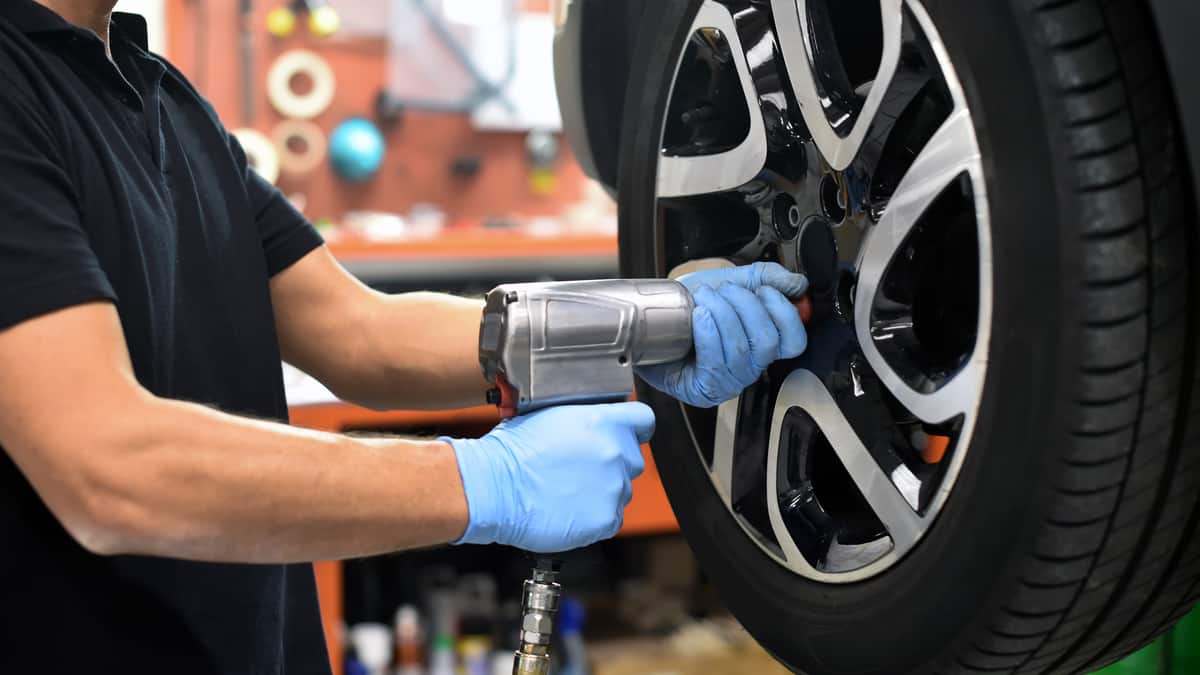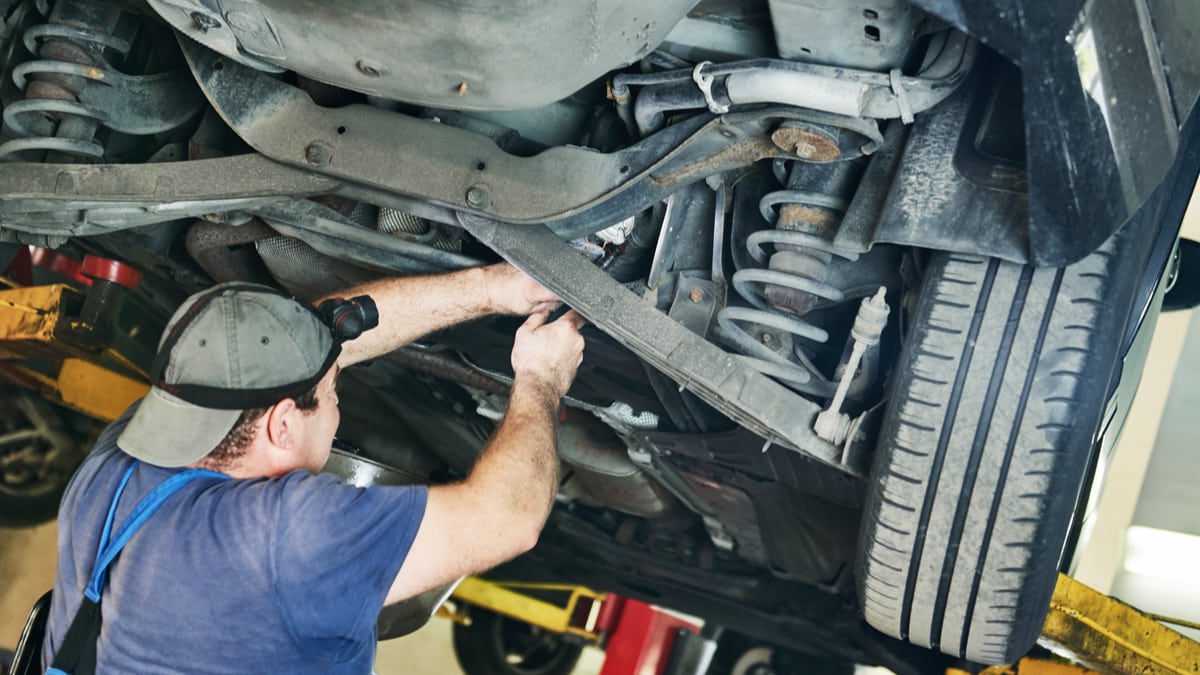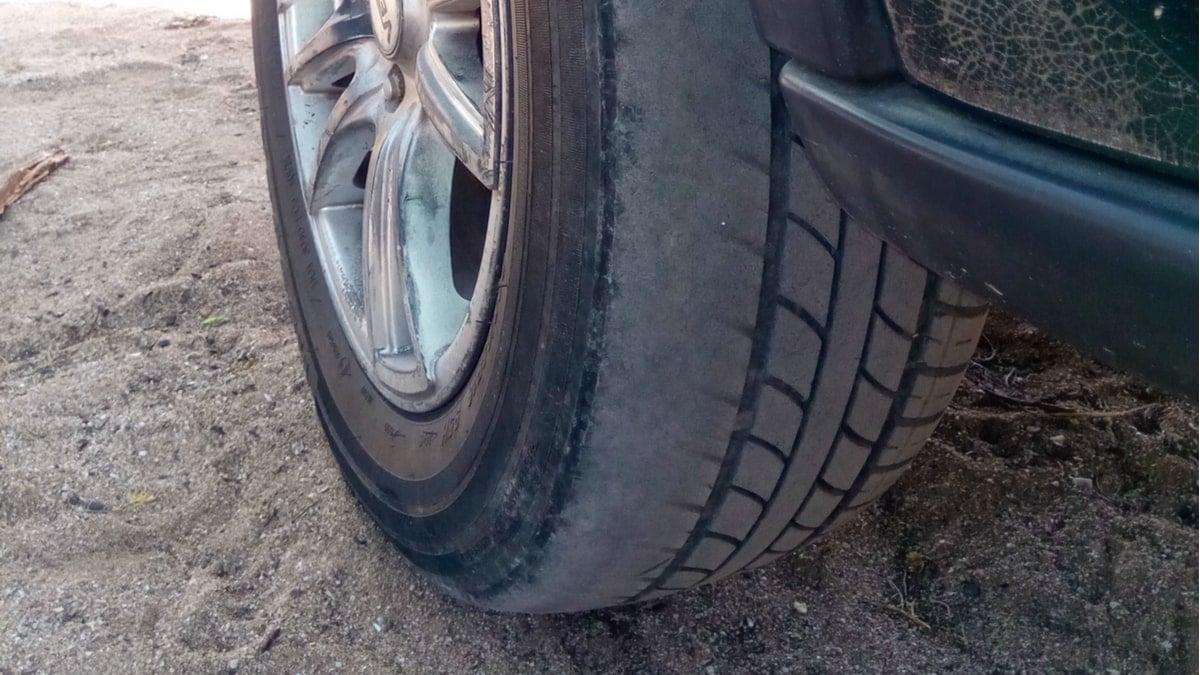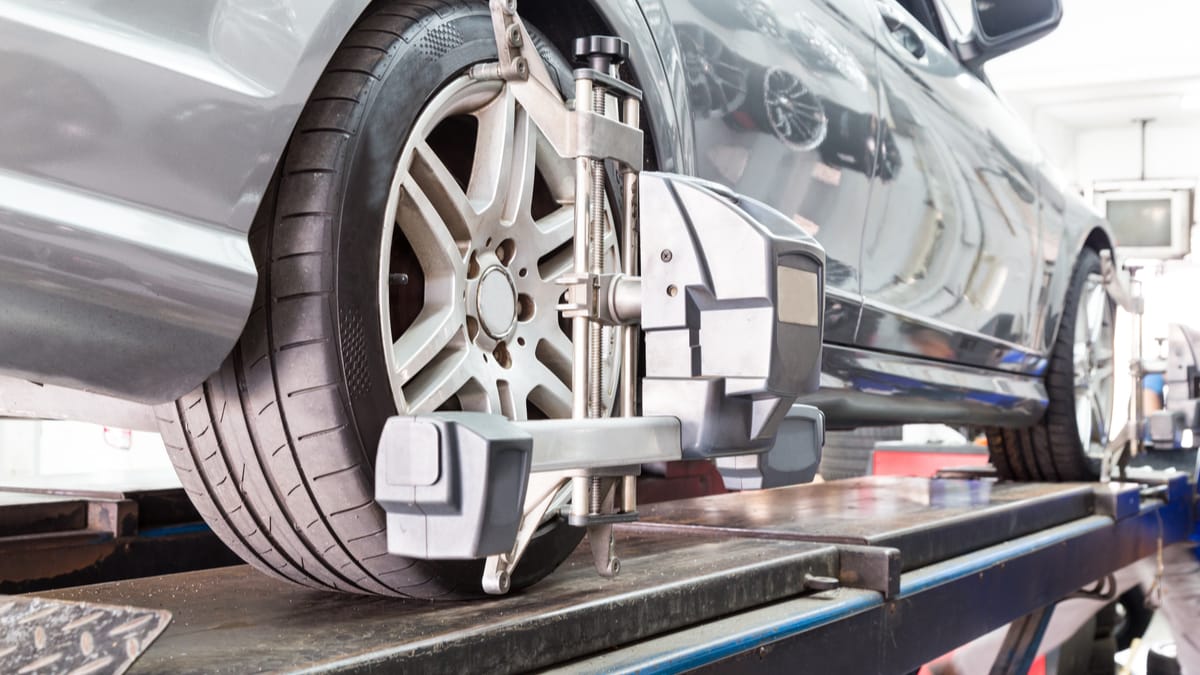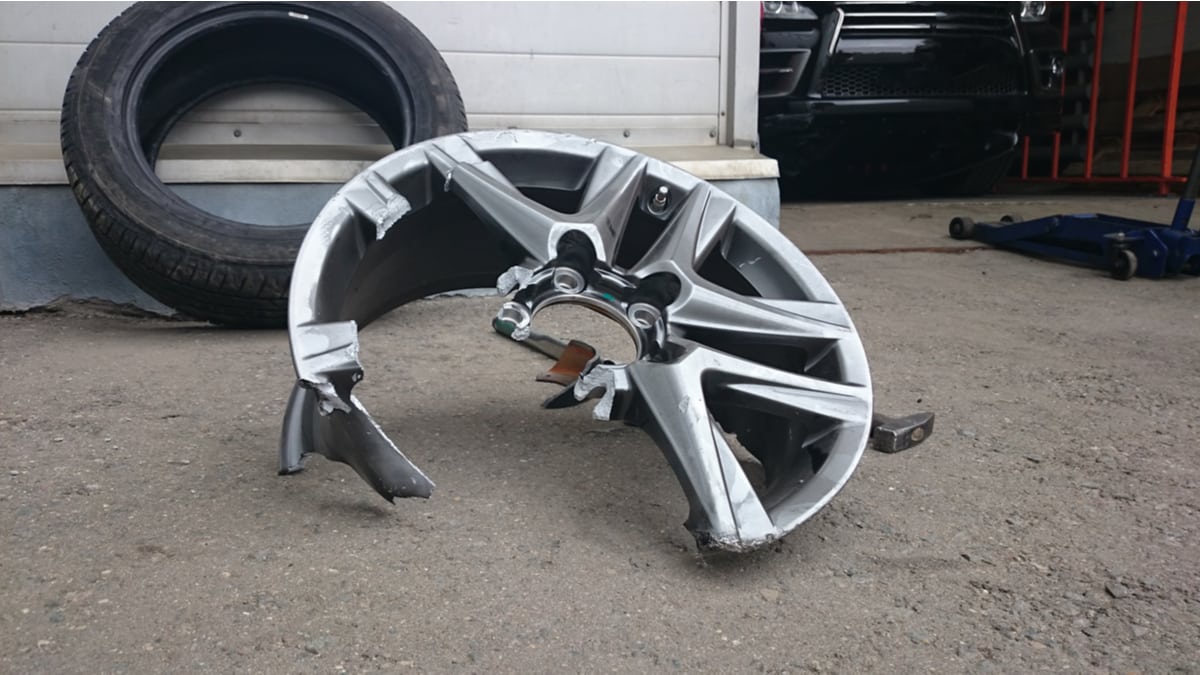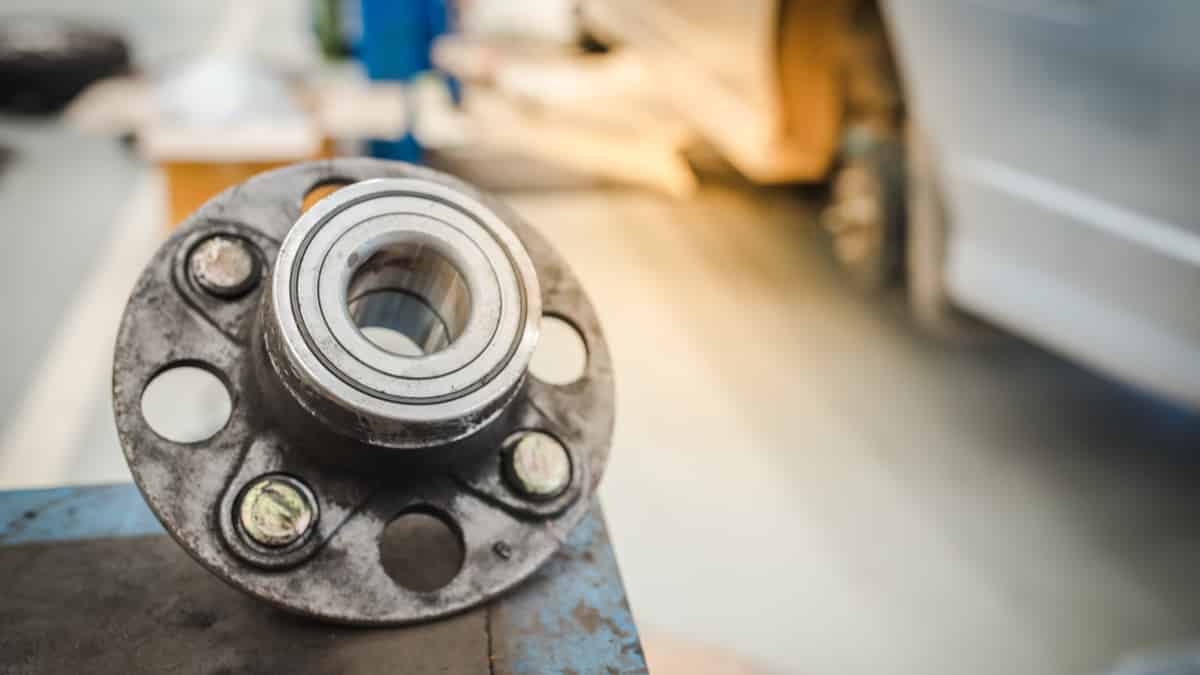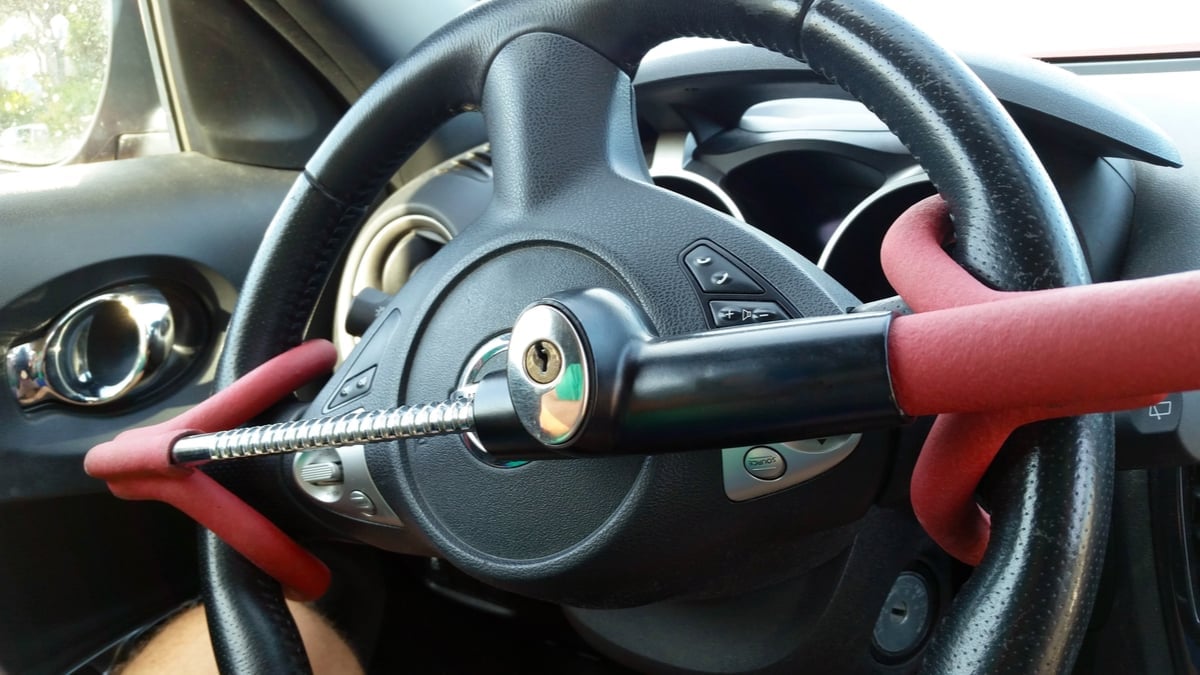Even though you know that your vehicle needs a regular wheel alignment to keep the ride at its best, you might balk at having the service done, because you are worried about the expenses. Thankfully, the wheel alignment cost isn’t typically that expensive.
In this article, I take a closer look at the wheel alignment cost. I also examine what factors influence this cost and discuss when it’s a good time to get a wheel alignment.
How Much Does A Wheel Alignment Cost?
The average front wheel alignment cost is between $50 and $150. However, the wheel alignment check might not cost you anything while you have other maintenance performed. If you have all four wheels aligned, the cost might be closer to $200.
Of course, this cost depends on multiple factors, and the estimates above were roughly calculated. Your price will change based on where you live, the type of shop you go to, and what vehicle you drive.
| Front Wheel Alignment | Low: $50 | Average: $80 | High: $150 |
| 4 Wheel Alignment | Low: $80 | Average: $120 | High: $200 |
Average 2-Wheel Alignment Cost by Car Model
| Car Model | Min Cost | Max Cost | Average Cost |
|---|---|---|---|
| Ford F-150 | $80 | $150 | $100 |
| Honda CR-V | $100 | $200 | $150 |
| Chevrolet Silverado | $80 | $150 | $100 |
| Ram 1500/2500/3500 | $80 | $150 | $100 |
| Toyota RAV4 | $100 | $200 | $150 |
| Toyota Camry | $50 | $150 | $80 |
How Much Does A 4 Wheel Alignment Cost?
The average four wheel alignment cost is between $100 and $200. However, the prices may vary depending on the type of car, the age of the car, and where it’s done. If you have an older car, the mechanics may charge more to get rusted parts loose in order to adjust the wheels.
Is It Worth Getting 4 Wheel Alignment?
If it’s possible to do a 4 wheel alignment on your car model, it is definitely worth it. However, a 4 wheel alignment is not possible on all car models, so you need to look it up first. The wheel alignment cost difference between a two- and four-wheel alignment isn’t usually very large, so it’s definitely worth it.
How Much Does A Rear Wheel Alignment Cost?
A typical rear wheel alignment costs between $50 and $150 – usually the same as a front wheel alignment. However, the cost depends on the type of rear wheel alignment you want. If you decide to just adjust the toe angle, it can be a little cheaper than also adjusting the camber angle, which can be difficult at times.
What Influences the Wheel Alignment Cost?
1. Location
Service center prices are widely different based on where you live. Work on the west and northeast coasts seems to be the most expensive. Not only does it matter what state you live in, but it also depends on what type of area you get work done.
Sometimes, it can pay to visit a service center outside the busy city. However, you don’t want to choose a no-name shop in the middle of rural America that lacks experience or the equipment to get the job done right.
2. Type of Service Center
If you visit a dealership, you are going to spend more than if you visit a neighborhood service center. These dealerships cost more than almost any other location, but they are also staffed with factory-trained technicians that understand your vehicle make the best.
However, you don’t want to overlook the value of visiting a dedicated tire service center. Many of these locations offer superior deals, and because they only work on tires, they have perfected the service.
RELATED: Mechanic Labor Rates Per Hour
3. Alignment Type
Two different alignments are available – either manual or digital. With a manual alignment, you can save a lot of money because it’s easier to set up. The manual alignment machine is typically using a laser to align the wheels.
Digital wheel alignment costs more because of the equipment that needs to be used. Your vehicle is lifted up on a rack and sensors are attached to each tire. Measurements are taken from each tire and the necessary adjustments are made. While this digital wheel alignment costs extra at the time, you will see a tremendous difference because of the extreme precision.
4. Vehicle Type
Not every vehicle needs a four-wheel alignment. If you only need to have two wheels aligned, you can save a lot of money. An educated tire shop will be able to figure out what’s needed based on your car make and model.
If your suspension has been altered in any way, the alignment might cost more. Anything that requires the technician to perform more work will lead to a higher cost.
5. Service Packages
A good way to save some money on wheel alignments is with the help of service packages. If you shop with a local tire store, they might offer alignment service agreements that cover your tire rotations and/or alignments for the life of the tires you purchase.
If you spend $250 for a lifetime agreement and the normal wheel alignment costs $95, you will have paid for the plan by the time of your third visit. These service plans can be a good value, especially if you require more frequent alignments because you drive down rough roads or you hit a lot of potholes.
6. Additional Work
It’s easy to determine what your wheel alignment will cost. A simple call to your local service center offers that answer. However, you don’t know what other parts need to be replaced.
If there are broken components, you might need to have them replaced before the alignment can occur. All of the parts and labor for these repairs will add to the average wheel alignment cost.
What is a Wheel Alignment?
The wheel alignment service requires that a technician adjusts the wheel’s angles to meet the manufacturer’s specs. There are three vital measurements looked at during the wheel alignment service.
Here are the differences between the toe, caster and camber adjustments.
1. Toe
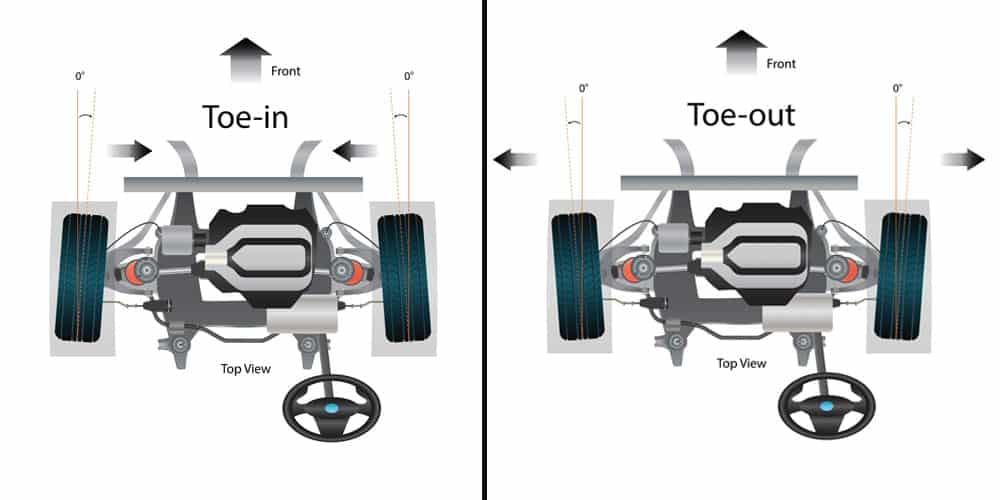
Toe is the term used to describe what direction the tires are pointing. It’s arguably the most critical aspect of any alignment, but it isn’t difficult to alter. With the right toe in place, you can drive in a straight line without making many adjustments to the steering wheel. It also helps you take turns with more safety and prevents wear to the tires. The toe will be measured as toe in or toe out.
- Toe in: The tires are pointing inward, facing one another.
- Toe out: The tires are pointing outward, facing away from one another.
For most vehicles, it’s better to have a mild toe in alignment than a toe out.
2. Caster
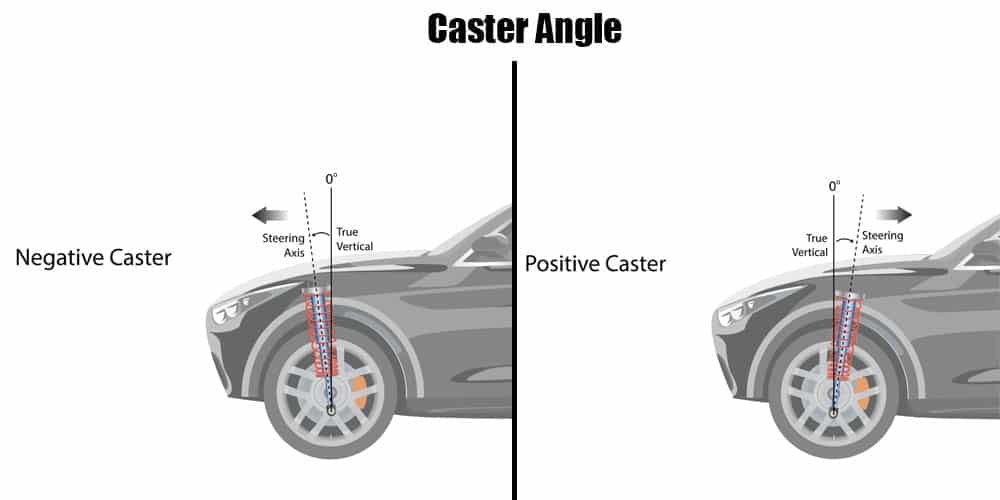
The caster shows the angle of the front suspension or steering axis. This measurement affects how your steering feels, but won’t have an impact on the wear of your tires. Caster is measured as either positive or negative.
- Positive caster: The steering axis remains tilted slightly toward the vehicle’s rear. Ideally, this is where your wheel alignment is. When it is positive, the steering wheel can quickly return to its original position after you make adjustments or take a turn.
- Negative caster: The steering axis pulls in the opposite direction than where it should be. Most often, this occurs after you run into something with the vehicle.
Both caster angles on the left and right of the vehicle should be nearly equal. Even the smallest difference can lead to trouble handling the vehicle. However, caster isn’t something that’s spotted easily without a wheel alignment.
3. Camber
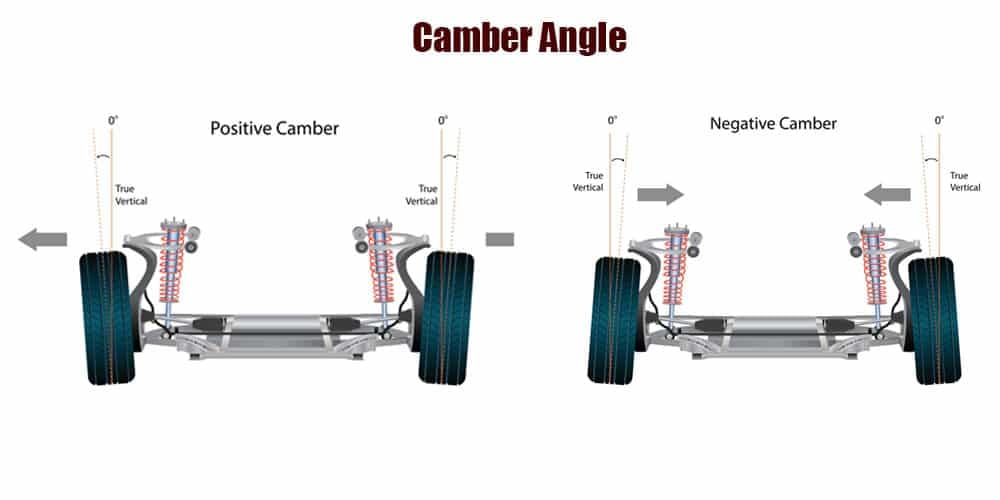
The camber is a term used to discuss whether the wheels are leaning in or out. It’s the angle the wheels sit compared to the flat road surface axis. With the camber out of spec, the tire edges on the inside and outside can wear prematurely. Camber is described as either positive or negative.
- Positive camber: The wheels are tilting outward, facing away from one another.
- Negative camber: The wheels are tilting inward, facing into one another.
In some cases, negative camber can increase performance. If it’s occurring slightly on the rear wheels, the vehicle takes turns easier because there is more contact with the road. However, having too much of this negative camber can cause difficulty steering. Plus, the tires will wear too quickly.
It’s also possible to have one wheel with a different camber than the other. If one side is negative with the other positive, the positive is going to overrule the ride, with the vehicle pulling to that side.
RELATED: How long does a wheel alignment take?
How to Know if Your Car Needs a Wheel Alignment?
The most common sign that your car needs a wheel alignment is that the steering wheel is not straight, even if you drive the car straight. Another strong sign is if you see that the tires are not wearing evenly. Also, if your car pulls to the side, there is a high risk that your car needs a wheel alignment.
Wheel alignment is considered a regular maintenance service. You should have an alignment performed every 6,000 miles or six months. Some people choose to have the service done at the same time as an oil change. However, not all vehicles need to be serviced this often. If you drive on smooth highway roads and avoid rough terrain, you might not need service this frequently.
The biggest determining factor as to how often it should be done is to use your intuition. If it feels like something is wrong with the ride and your tire inflation is where it should be, you should have the alignment checked. After all, it’s better to be safe than sorry.
Other than the regular checks during traditional service, you should also get a wheel alignment if you notice any of these symptoms or problems.
- The car has been in an accident.
- You recently ran into a curb, hit a pothole, or driven into another object.
- The tires have begun wearing unevenly.
- New tires have been installed. Alignment is required if you want to take advantage of the warranty.
- If you need to replace one tire prematurely, the alignment should also be performed.
- Road noise is getting louder as you drive.
- There’s a squealing noise when you take a turn.
- Vibrations are felt in the steering wheel as you drive.
- You recently had a lift kit installed. Any time that steering or suspension parts are replaced, you might need to get a wheel alignment.
Many of these symptoms can be caused by other problems, but they should always be looked at.
LEARN MORE: 5 Symptoms of a Bad Wheel Alignment (Why you should fix it)
What’s The Difference Between Wheel Alignment vs. Wheel Balancing?
When you have the wheels balanced, the unevenness of the wheels is compensated for. Each wheel has a different distribution of weight, which is adjusted. The wheel alignment isn’t balancing anything. Instead, the service focuses on keeping the wheels aligned so the tires are pointed straight down the road.
If the wheel balance isn’t evened out, there will be excessive vibration, premature tire wear, and other suspension issues. You may also need to have the wheels balanced every 6,000 miles, depending on how you drive the vehicle.
A proper alignment ensures that the car travels in the appropriate direction, and it helps to prolong the life of the tires.
RELATED: 5 Symptoms of Unbalanced Tires (& Tire Balancing Cost)
While these are different services, you can have them performed at the same service center. In fact, some tire shops will offer a combined service that helps you keep the cost to a minimum. Look to bundle your wheel maintenance services to save some money.
Are wheel alignments worth it?
Wheel alignments help ensure that your car’s tires wear evenly and perform at their best. You will also save on the wheel alignment cost and more by not having to change tires as often when doing regular wheel alignments.
Can You Do A Wheel Alignment at Home?
It is possible to do a wheel alignment at home, but it can be difficult to get a good result without the right tools. There are some methods you can look up on the internet to align your wheels at home, but the chances of getting good results are small, and if you get it wrong, it will be more expensive to change the tires.
Is It Better to Get a Wheel Alignment Before or After New Tires?
Most wheel alignment machines are attached to the rims of the car, so it doesn’t matter if you do the alignment with new or old tires. However, if you are getting new tires, you definitely want to do the wheel alignment as soon as possible to avoid wearing the new tires.
If you are in need of a wheel alignment, it is best to consult with your nearest mechanic to get an accurate estimate for your particular car model. Keep in mind that the average front wheel alignment, rear wheel alignment, or 4-wheel alignment cost may vary depending on the make and model of your vehicle.
But by considering the factors I’ve discussed in this article, you should be able to get a good idea of how much you can expect to pay for it. I hope this article helped you, and that you now have all the knowledge you need to choose the type of wheel alignment your car need.
Learn more:
- How Much Does a Tire Rotation Cost? (& Is it worth it?)
- Steering Wheel Not Straight? (Common Causes)
- Inner Tire Wear – Causes & How to Fix it
- Tires Wear on Outside Edge – Causes & How to Fix
Categories: Estimator, Suspension
